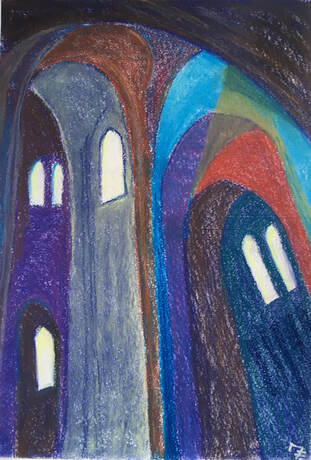 During my teenage years I had a real fascination with Gothic architecture. It probably began with visits to numerous French cathedrals and a real wonder (in both senses of the term) about how they came to be built. Reading William Golding’s novel ‘The Spire’ gave me a sense of the fragility of these massive structures (insubstantial foundations) and a real interest in how they were built. On touring holidays around France with many long car journeys I often engrossed myself in Bannister-Fletcher’s ‘A History of Architecture’, which taught me much of the technical as well as the aesthetic aspects of buildings. My particular fascination with the Gothic then led to a wider interest in ecclesiastical architecture and how church buildings have been shaped to express faith, encapsulate worship (in various forms) and, like the Gothic, lift the eyes and the heart in worship. While the spiritual aspect, along with the dedication and skill required, is very worthy, there are aspects of these grand buildings that are well removed from faith and God. Even today cathedrals are institutions of status, prestige and wealth. They are also communities within which ambition, power and influence are at play and where some of the baser expressions of human relationships work themselves out. These are brought out quite clearly in ‘The Spire’. These are all elements of human life and nature where faith plays out in a transformative way leading then to a greater appreciation of God and indeed worship, but care is needed that such inspired structures, while encouraging our eyes and hearts to God, do not foster the baser elements too. For me, it is an awareness of the fragility of these structures that proves most important. They are not solid monuments to human achievement, but rather more delicate expressions of human weakness out of which spring aspirations towards the Divine. They are places where, yes, people’s eyes are raised toward heaven but also where people are to be found on their knees.
0 Comments
|
Archives
March 2024
|
 RSS Feed
RSS Feed
